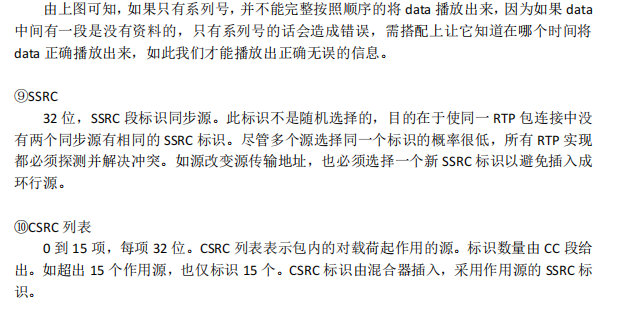一、什么是CountDownLatch
CountDownLatch是具有synchronized机制的一个工具,目的是让一个或者多个线程等待,直到其他线程的一系列操作完成。
CountDownLatch初始化的时候,需要提供一个整形数字,数字代表着线程需要调用countDown()方法的次数,当计数为0时,线程才会继续执行await()方法后的其他内容。CountDownLatch(int count);
二、CountDownLatch对象中的方法
- CountDownLatch(int count):count为计数器的初始值(一般需要多少个线程执行,count就设为几)。
- countDown(): 每调用一次计数器值-1,直到count被减为0,代表所有线程全部执行完毕。
- getCount():获取当前计数器的值。
- await(): 等待计数器变为0,即等待所有异步线程执行完毕。
- boolean await(long timeout, TimeUnit unit): 此方法与await()区别:
①此方法至多会等待指定的时间,超时后会自动唤醒,若 timeout 小于等于零,则不会等待
②boolean 类型返回值:若计数器变为零了,则返回 true;若指定的等待时间过去了,则返回 false
三、CountDownLatch使用
首先我们先使用join阻塞等待线程完成
首先建立3个线程。
public class Worker1 implements Runnable {
@Override
public void run() {
System.out.println("-线程1启动");
try {
Thread.sleep(13_000);
} catch (InterruptedException e) {
e.printStackTrace();
}
System.out.println("线程1完成--我休眠13秒\r\n");
}
}
public class Worker2 implements Runnable {
@Override
public void run() {
System.out.println("-线程2启动");
try {
Thread.sleep(3_000);
} catch (InterruptedException e) {
e.printStackTrace();
}
System.out.println("线程2完成--我休眠3秒\r\n");
}
}
public class Worker3 implements Runnable {
@Override
public void run() {
System.out.println("-线程3启动");
try {
Thread.sleep(3_000);
} catch (InterruptedException e) {
e.printStackTrace();
}
try {
Thread.sleep(3_000);
} catch (InterruptedException e) {
e.printStackTrace();
}
System.out.println("线程3完成--我休眠6秒\r\n");
System.out.println();
}
}
public class Main {
public static void main(String[] args) throws InterruptedException {
Worker1 worker1 = new Worker1();
Worker2 worker2 = new Worker2();
Worker3 worker3 = new Worker3();
Thread thread1 = new Thread(worker1,"线程1");
Thread thread2 = new Thread(worker2,"线程2");
Thread thread3 = new Thread(worker3,"线程3");
thread1.start();
thread2.start();
thread3.start();
thread1.join();
thread2.join();
thread3.join();
System.out.println("主线程结束....");
}
}结果如下所示:

可以看出三个线程是并行执行的。启动顺序,并不和执行完毕的顺序一致,但可以明确的是,主线程为一直阻塞,直到三个线程执行完毕。
使用CountDownLatch模拟并发
CountDownLatch countDownLatch = new CountDownLatch(1);
for (int i = 0; i < 5; i++) {
new Thread(() -> {
try {
//所有请求都阻塞在这,等待
countDownLatch.await();
// 调用测试接口
System.out.println(Thread.currentThread().getName() + "开始执行……");
} catch (InterruptedException e) {
e.printStackTrace();
}
}).start();
}
// 让请求都准备好
Thread.sleep(2000);
// 让所有请求统一请求
countDownLatch.countDown();单个线程等待:多个线程(任务)完成后,进行汇总合并
int count = 3;
CountDownLatch countDownLatch = new CountDownLatch(count);
for (int i = 0; i < count; i++) {
final int index = i;
new Thread(() -> {
try {
Thread.sleep(1000 + ThreadLocalRandom.current().nextInt(1000));
System.out.println("finish" + index + Thread.currentThread().getName());
} catch (InterruptedException e) {
e.printStackTrace();
}finally{
countDownLatch.countDown();
}
}).start();
}
countDownLatch.await();// 主线程在阻塞,当计数器==0,就唤醒主线程往下执行。
System.out.println("主线程:在所有任务运行完成后,进行结果汇总");我们可以看到如下结果是主线程一直阻塞一直等待计数器==0才唤醒主线程继续执行的。

四、CountDownLatch原理
CountDownLatch是通过AQS的state字段来实现的一个计数器,计数器的初始值(state的值)为new CountDownLatch设置的数量,每次调用countDown的时候,state的值会进行减1,最后某个线程将state值减为0时,会把调用了await()进行阻塞等待的线程进行唤醒。CountDownLatch重写了tryReleaseShared这个方法,只有当state这个字段被设置为0时,也就是tryReleaseShared返回true的情况就会执行doReleaseShared方法,把调用了await的线程进行唤醒。
public final boolean releaseShared(int arg) {
if (tryReleaseShared(arg)) {
doReleaseShared();
return true;
}
return false;
}
protected boolean tryReleaseShared(int releases) {
// Decrement count; signal when transition to zero
for (;;) {
int c = getState();
if (c == 0)
return false;
int nextc = c-1;
if (compareAndSetState(c, nextc))
return nextc == 0;
}
}


















